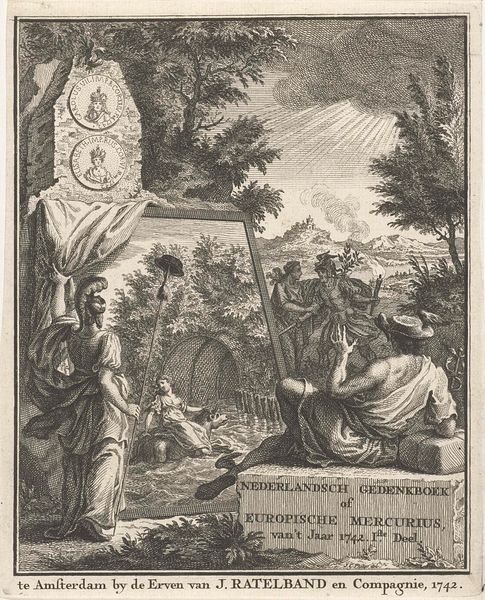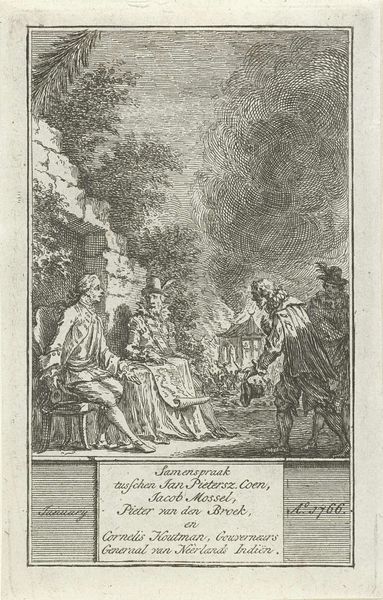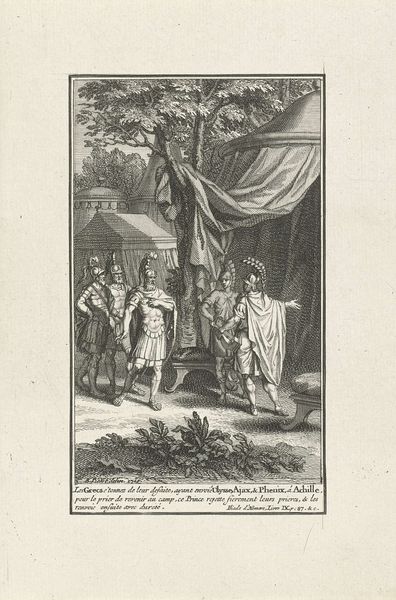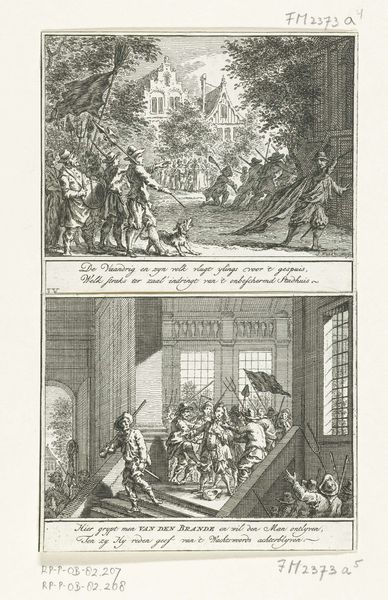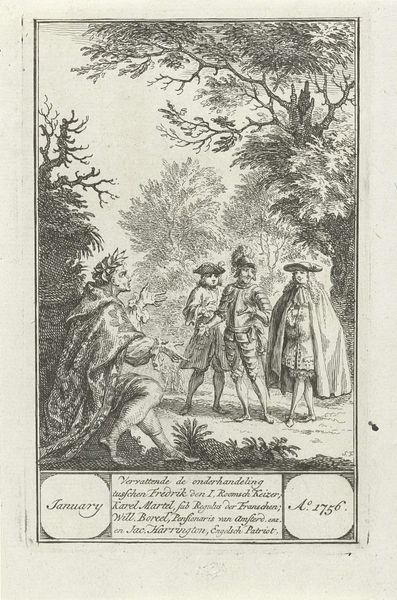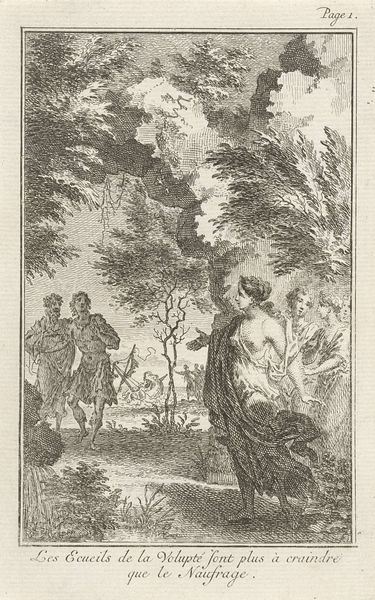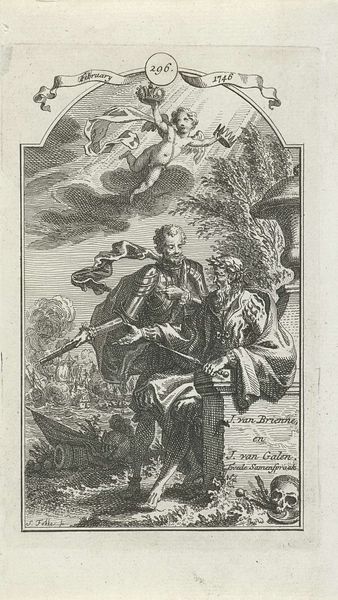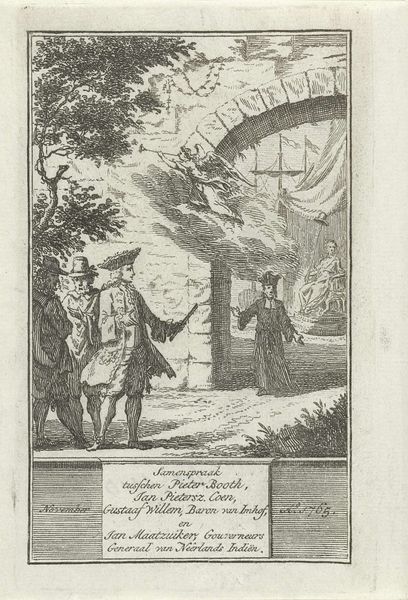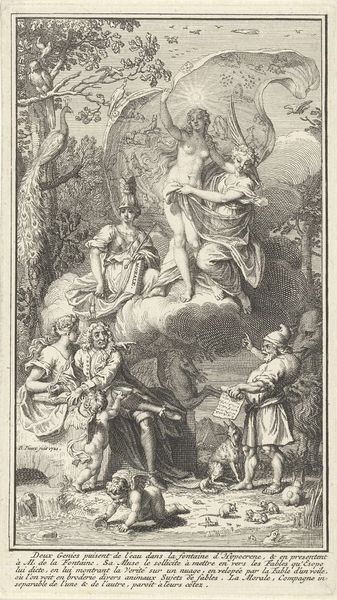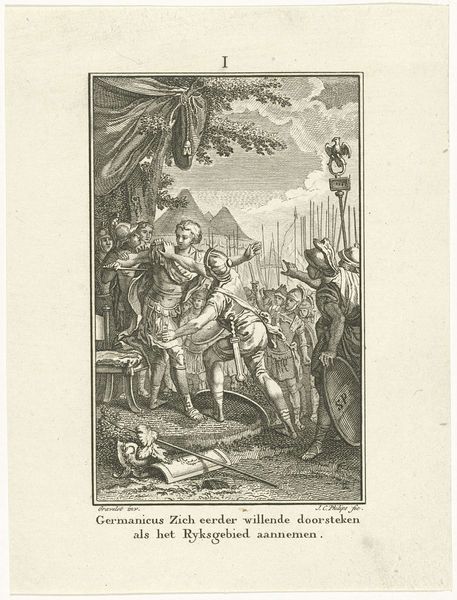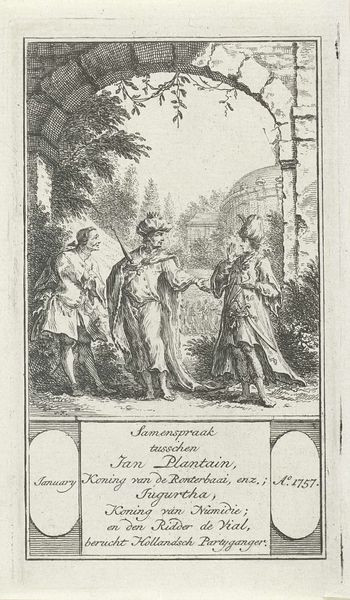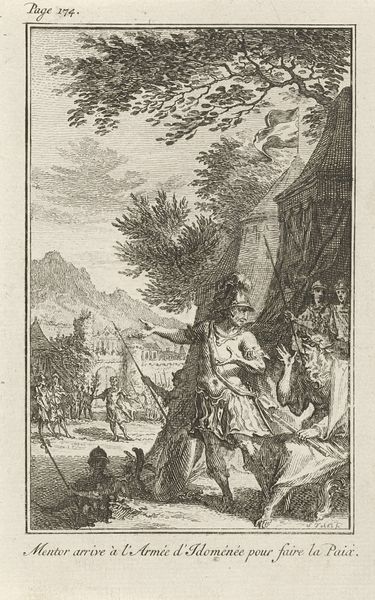
print, engraving
#
baroque
# print
#
pen sketch
#
old engraving style
#
figuration
#
history-painting
#
engraving
Dimensions: height 124 mm, width 79 mm
Copyright: Rijks Museum: Open Domain
This print, made by Simon Fokke in the 18th century, is an etching, a technique that relies on the corrosive power of acid to create lines in a metal plate, which is then inked and printed. The etched line is distinctive. Because the artist doesn’t directly cut into the metal, but rather draws through a resistant ground, there’s a fluidity to the line that you wouldn’t get with, say, an engraving. This allowed Fokke to create fine details in the figures’ clothing, faces, and the surrounding landscape. Notice how the fineness of line lends a certain delicacy to the overall image. The technique of etching was crucial to the rise of print culture because it allowed for the relatively quick and easy reproduction of images, making art more accessible to a wider audience. In this case, the image serves to illustrate a conversation between Robertus Zelandus, an inhabitant of Tobago, and Francis of Assisi. By focusing on the materiality of the print, we gain insight into its historical context and the broader social implications of its production.
Comments
No comments
Be the first to comment and join the conversation on the ultimate creative platform.
